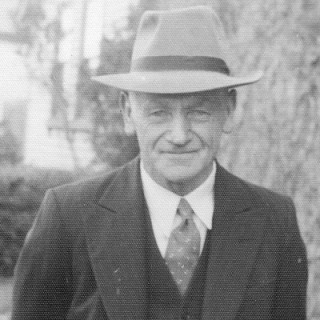
My Journey with EJ
After 265km, I have developed a really special connection with my great grandfather, I just wish I had the chance to meet him.
I had often heard stories of my great grandfather (EJ Tilley), most of these were from his time as a market gardener in the suburb of Cheltenham, Victoria. On occasions I would hear about his love of cycling, but I never really took much notice.
It was probably 6 months ago that I started to get a little serious and become committed to finding all I could about EJ. This I must say often resulted in many a late night, reading through historical archives, countless newspaper articles and ‘googling’ numerous combinations of words, often to no avail. I experienced some success, finding the odd piece of information and as I improved my search techniques started to discover some real insights into EJ, whom I can now say was a seasoned rider in his time.
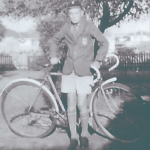
This was not a small undertaking and in the end, I just wanted to finish the write up. I take my hat off to those that set out to document a family tree. The compilation below would not have been possible had it not been for my Uncle John and Aunty Joan. Not only did they provide a lot of the information and pictures below, but Uncle Johns own personal relationship with EJ made this journey all the more special and I hope that in some way I have found some new insights he otherwise would not have known. Although referenced below, the national library was and is an invaluable resource which, had it not existed, would have made this impossible. I also acknowledge contributions by Warrnambool Historical Society and the Kingston Historical Website.
Some of EJ’s Races
Below are just some of the races in which EJ rode, some small, other bigger, but from what I can see, he must have started racing as a teenager and he had some pretty good results, clearly improving with each year.
- Moorabbin Bicycle Club (March 14, 1906) a 2 Lap ellipitical course, won by E. Flack, 2nd C. Chitts and EJ 3rd (LINK)
- Moorabbin Bicycle Club (July 11, 1906) a 3 Race Aggregate won by EJ with 70 points (LINK). This race made EJ elligible for selection in the ICCA 25mile race to be held in August later that year. Also notes that he was riding a Sutherland Bike.
- ICCA Interclub Teams Race (August 11, 1906) – EJ was selected to represent his club, #31. (LINK)
- Moorabbin Cycle Club Meeting (October 13, 1906) – reference to EJ and other boys beating the men in races (LINK)
- Moorabbin Cycling Club (November 1st, 1906) a 25 mile road race held from the Mechanics Institute of Cheltenham – (LINK). As outlined in the article, EJ had a great fight with O. Judd who won by a couple of inches.
- The Market Gardeners’ and Fruit Growers 25th Annual Picnic at Mornington – Open 2 mile cycle race (Thursday 27th February 1908) – EJ rode off scratch (LINK)
- 16 Mile Moorabbin Cycle Club Road Race (August 12, 1908) (LINK) – EJ unfortunatly had a collusion on Beach road with Flack. Flack had his hand so badly cut that Dr. Scantleburys services were requisitioned, EJ escaped with a few bruises. An earlier article looks like EJ was riding off scratch for this race (LINK).
- Sutherland Annual Road Race held at Oakleigh (September 3, 1910) – riding off 4.5 minutes (LINK)
- Market Gardeners and Fruit Growers 28th Annual Picnic – Open 2 mile Bicycle Race (February 23, 1911) (LINK)
So as you can imagine, finding these pieces of family history have been fantastic and have really brought EJ to life and I’m sure with further researching I will find some more info on his racing days. But whilst I’m physically able, I wanted to take the next step and ride the route of EJ’s most notable race, the Warrnambool to Melbourne.
The ‘Warny’
On Saturday the 17th October, 2015, the 100th Melbourne to Warrnambool Cycling Race was run. The race, also known as the “Warny” is Australia’s oldest single day road race and the second oldest single day race in the world, second to the Liege-Bastogne-Leige. If there was ever going to be the right time, this was it. I wasn’t racing in the main race, instead I was about to take a solo journey back in time, retracing the tracks of my great grandfather-EJ Tilley. Well almost, we drove to Warrnambool, but most competitors in 1910 rode to Warrnambool over two days as part of their training or caught the train.
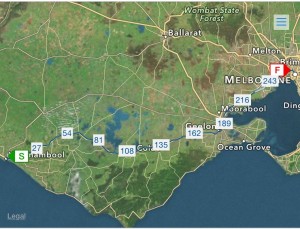
The Melbourne to Warrnambool wasn’t always run in the one direction, in fact it ran the reverse (Warrnambool to Melbourne) 32 times, these between 1908 and 1958. In 1910 (105 years ago) the ‘Warny’ ran from Warrnambool to Melbourne, with the 1910 race being the 15th run with a record number of 355 riders starting the race, one of whom was EJ. The morning of the race, a coach went to each of the accommodation houses to collect the riders clothes, these were then loaded onto a train and taken to the City Baths in Melbourne for collection by the riders once they finished.
I found the picture below in one of the papers, but couldn’t find any reference to the race numbers. Maybe EJ was in there somewhere. Apparently the riders numbers would be listed in the race program, but I’m finding that one a little hard to track down.
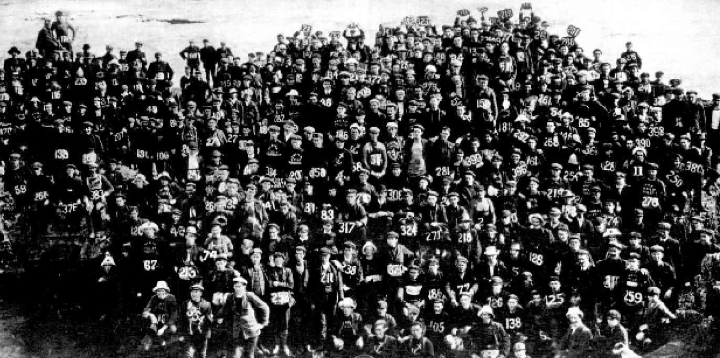
Entries were via mail, no not email Gen Y’s, but the old stamp and envelope. I have found many articles on the race courtesy of trove.nla.gov.au, with this one detailing the method of entry (LINK). There was some controversy in some lead up races where results were questioned,so the Dunlop Motor Co. imposed some new rules for the 1910 race. Firstly, riders had to specify the make of tyre they were using and they also had to ride the race on the same nominated tyre. Competitors also had to finish the race on the same bike that they started on (LINK). Imagine the luxury of having a second bike in 1910. Bikes were sealed prior to the start, this I can only assume was an inspection by an official with some form of marker to confirm the bike was inspected and fit to race.
The 1910 race attracted 525 entries, with 409 accepting and only 355 starting the race. Of the entries, there were 53 Interstate riders (15 riders from new zealand, 13 from SA, 11 from NSW, 6 from WA, 5 from Tas and 3 from Qld (LINK). Distance rides were quite common in 1910, with most states holding rides in the lead upto the Warny to determine their state representative. Details of the Beverley to Perth ride can be found here (LINK). The Dunlop motor co provided 20pounds to the winner conditionally on them proceeding to race the Warny in the coming weeks. Even N.Z had a test race of 116 miles from Timaru to Christchurch to determine their riders to send to the race (LINK) and Tasmania held their race from Hobart to Kings Meadows-Launceston (LINK). The Warny truly was a significant race in the day with the 1910 race significant in Australia’s first team going to the Tour de France.
The Race
The Warny was handicapped with the first riders departing at 6:00am and then in groups every few minutes until the scratch riders left at 7:00am. EJ was given a pretty good handicap of 41 minutes (LINK) and starting with a group of 41 riders meant they had a good bunch to make the most of their start. Conditions on the day were not ideal, with riders facing a headwind, this further assisting the front makers. At 6:19, EJ and 40 others set off. At 6:19 when I left Warrnambool, it was still pretty dark, so those starting at 6:00am in 1910 would have been riding in the dark.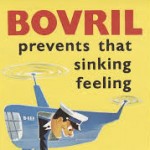
Numbers of officials along the route varied between 50 and 60, depending on what newspaper you read (LINK), including one official that was on the train to make sure no rider jumped aboard. Food was distributed at Camperdown, Colac, Mt. Gellibrand, Winchelsea, North Geelong, Little River and Werribee, while the riders were time checked at Camperdown (43 miles). Colac (72miles), Winchelsea (95 miles) and at the entrance to Geelong (nearly 120miles) (LINK).
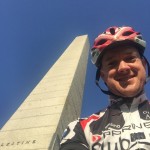
By Terang (29 miles/46km), the limit men (starting 19mins ahead of EJ) were apparently tiring which given they were only 29miles into the race makes me think they were in for a very long day in the saddle. To make some respectable progress against the strong wind, riders had to ride in tight knit bunches. Just think of the Peloton @LeTour de France, but instead of asphalt, it was on muddy roads with pools of water from the recent rain. A big bunch had formed at the front of the field, passing through Camperdown at 8:30am. This group holding the eventual winner, C. A Piercey (47min). Of note, Piercey’s handicap was initially withheld pending compliance with the Dunlop Race Conditions.
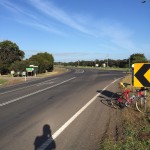
The route from Warrnambool to Camperdown was basically North/North East, so wind was certainly a factor. 2miles out from Camperdown on a sharp bend in the road, 15 riders fell with A.R Collins (43mins) taken to Camperdown Hospital, being treated by a Dr. Murray. I haven’t been able to find an exact record, but given EJ started only 2 minutes behind, he could well have been amongst the mayhem. In Camperdown, as the road rises over the spur of Mount Leura, each rider secured a satchel containing three bananas, four oranges, ¼ lb each of chocolate, muscatel raisins, and specially prepared beef sausages, a quantity of celery, and a pint tin of warm milk and bread sweetened. Now that’s an aid station.
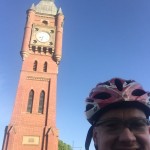
EJ officially passed through Camperdown at 8:58am, this riding a single speed, fixed wheel bike (LINK). I wasn’t out to set any records but at the same time, as Camperdown was the only record I had of EJ’s time on route, I wanted to get a feel for how he must of gone back in 1910. I reached Camperdown at 8:35 which given I was on a modern bike with 20 gears and on a sealed road, gives you some guide as to the strength and endurance of riders back in 1910. As there were no officials handing out warm milk and bread when I arrived, I dropped in the ‘Loaf and Lounge’ for a savoury twist and some electrolytes.
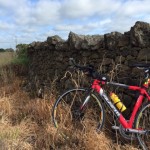
From Camperdown, details of EJ’s ride become scarce although given riders were checked at Colac (72miles), Winchelsea (95miles) and Geelong (120miles), there must be some record noting when he passed through, but this will be take some further research.. The road between Camperdown and Geelong was pretty good from my perspective, I particulalry liked the sections between Camperdown and Colac which contain an amazing collection of dry stone walls, these known as the Stony Rises which were built after the gold rush in the 1870s and 1880s. They were a dominant feature of this section of the ride – I wonder if EJ was as impressed as I when he rode through.
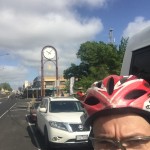
Colac was the next major town I rode through, another clock to mark the milestone. The first riders in 1910 passed through here at 10:00am, which given I passed though at 10:06 shows they maintained good speed, although I’m sure they weren’t taking ‘selfies’ along the route. From the drive to Warrnambool the day before, I knew the road between Colac and Winchelsea was a bit precarious due to the shoulders being narrow, so I wanted to get moving quickly to reach Winchelsea where the recent dual freeway was in operation.
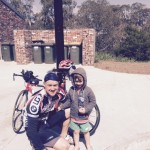
On the outskirts of Winchelsea, my family caught me, no doubt having enjoyed a lovely sleep at the flagstaff lighthouse lodge and nourishing breakfast. As the road presented no option for stopping, I waved them on, joining them at Cafe LA Hoot in Winchelsea. I was feeling pretty good at this stage, having made it through the worst stretch of road, and I was with my family which made it all the more special. A couple of photos and a carbohydrate loaded raspberry and white chocolate muffin and I was off with Geelong the next stop. The leading riders in 1910 passed through Winchelsea at 11:22.
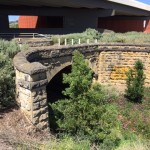
For most of the ride, I reflected on what it must have been like for EJ, not just the thought of only having a single speed, peddling like crazy on the descents and struggling to turn the peddles over on the hills, but more what the region was like over 100 years ago. The roads weren’t sealed, there would have been no roadside reserve, so trees could well have run right upto the edge of the road. On the outskirts of Geelong, on the new Geelong bypass, I was exiting the freeway at Waurn Ponds when I caught a glimpse of an old Bridge, more than likely passed over by EJ and today dwarfed by the significant overpass. Makes you appreciate preservation and historical societies and the role government policies play in preserving these historical items.
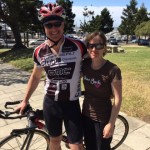
Now that the family had caught up, we took the opportunity to get some lunch at Geelong. As the bulk of the ride was now done, it was just a quick ride down the freeway into Haymarket to the finish. Although I had no times for EJ, the race leaders in 1910, passed through Geelong at 12:49. The eventual 2nd place winner passed through at 1:00pm. I had the benefit of a solo non competitive ride, so made the most of the break and relaxed with the family at the Geelong Waterfront.
I did like a letter to the editor of the Geelong Advertiser from 1910 which, coincidentally mentioned one of the Brighton and Moorabbin cycle club members (W.E Knaggs) who had crashed and was unconscious for a considerable time, having to rely on goodwill it seems to get some medical attention (LINK).
From Geelong, it was onto the freeway through to Werribee until I reached the ‘no bikes beyond this point sign’, so from here it was onto the Federation trail for a while before that ended and I was back onto roads that were not familiar. This wasn’t without its challenges as I was doing circles for a while in a housing estate in Hoppers Crossing before I finally made it onto the Old Geelong Rd and then Koroit Rd. I passed through Flemington at 4:40. In 1910, a phone message from Footscray to the finish line indicated that a group of 7 riders passed through at 3:55. By 4:14, the riders had reached Gatehouse Street and the race was now for the taking. In a sprint for the line, C.A Piercey (47min) won by a wheel length from J. McSweeney (17min) with E. Perrett (45min) in 3rd. (LINK).
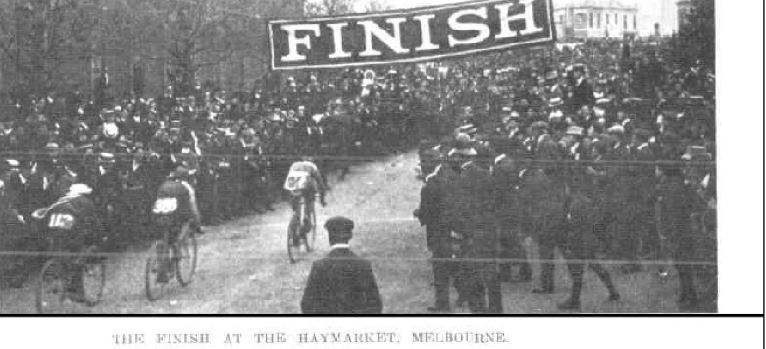
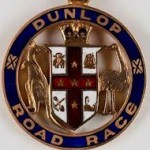
EJ finished at Haymarket at 6:34pm with an official time of 12hrs, 15minutes and 45seconds in 185th place (LINK). Of note, the following riders from the Brighton and Moorabbin cycle clubs, some of whom EJ raced against in some of the races mentioned above finished as follows:(LINK) 19. D. Kirkham (6min) 9h 41m 7s, 32. V. J Shaw (33min) 10h 29m 12s, 108 S. H. West (43min) 11h 12m 27s, 126. J. Sullivan (39min) 11h 12m 50s, 161 G. A Day (45min) 11h 55m 6s, 162. A. Barr (33min) 11h 50m 20s, 166. W. G Foster (45min) 12h 5m 1s. 16 others club riders were not in the results, so either didn’t start or finish within the cut off time or in Knaggs’ case, crashed.
Cool Fact
Another point of interest is that the race winner, C. A Piercey (1), along with D. Kirkham (19) (Brighton and Moorabbin cycle clubs), I.R. Munro (60) and G.W Bell (183) played a s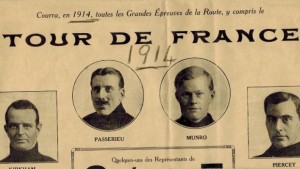 ignificant part in Australia’s cycling history, heading to France in 1913 in an attempt to gain selection in the Tour De France. Kirkham and Munro were successful in gaining a spot in the French Phebus-Dunlop team as domestiques – or helpers – for Frenchman Georges Passerieu who in 1906 was runner-up. The 15-stage Tour was brutal. The route was mainly dirt roads – and there was certainly no bitumen over the Pyrenees and Alps. After Passerieu quit on stage three, the Australians – dubbed “the Cannibals” by an admiring French press – seized their opportunity to race for themselves (source SMH – LINK).
ignificant part in Australia’s cycling history, heading to France in 1913 in an attempt to gain selection in the Tour De France. Kirkham and Munro were successful in gaining a spot in the French Phebus-Dunlop team as domestiques – or helpers – for Frenchman Georges Passerieu who in 1906 was runner-up. The 15-stage Tour was brutal. The route was mainly dirt roads – and there was certainly no bitumen over the Pyrenees and Alps. After Passerieu quit on stage three, the Australians – dubbed “the Cannibals” by an admiring French press – seized their opportunity to race for themselves (source SMH – LINK).
Kirkham placed 17th and Munro 20th; the overall winner was Belgian Philippe Thys. But the challenge for the Australians was not over once the finishing line at Paris passed under their wheels. With war declared five days after the finish, returning home as fast as possible became the priority. Although Piercey didn’t make the Tour De France, he did ride the Paris-roubaix, but ended up breaking a wheel, Kirkham breaking his bike and Munro finishing in 37th place, 7 minutes behind the 1914 winner, Crubelandt (source – http://www.staleyfamily.com.au/the-life-of-charles-a-piercey)
Wrapping Up
Sport has played and continues to play a significant role in my life. I’m continually surprised by the human bodies ability to adapt. I’m nothing special, certainly not gifted or blessed with an ideal body composition, but I am fortunate to have a body that is receptive to endurance training and combined with a fierce determination enables me to enjoy all that an active lifestyle has to offer.
For me, the ride was never about the time, but more the opportunity to connect with my Great Grandfather. Upon reflection, I feel I have formed a special connection with EJ and hope in the next few years to ride the Warny and earn a medal of my own. For the time being, I will continue to work towards achieving my current goal of competing in the Hawaiian Ironman. A special thanks to my family that supported me on the ride (Em, Finn, Fraser, Mum, Alan, Dad and Leisl). I didn’t need the 20,000 spectators at the finish, having you there was more than enough and Fraser, thanks for the drink buddy.
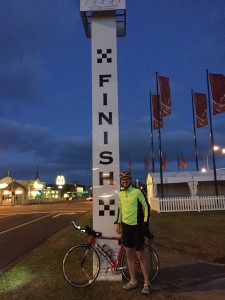


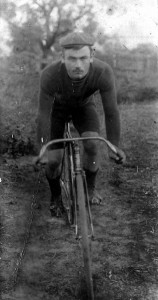
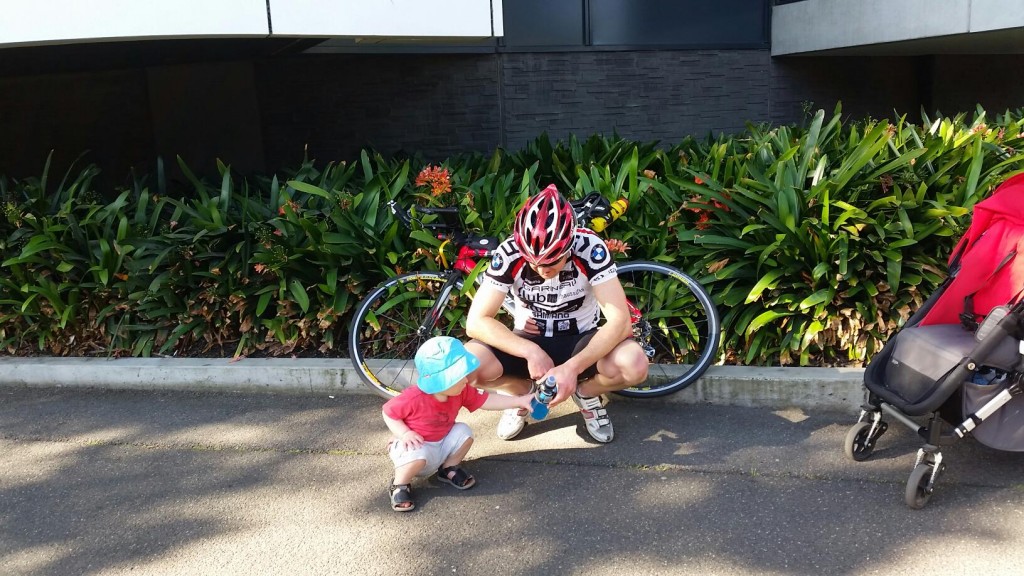
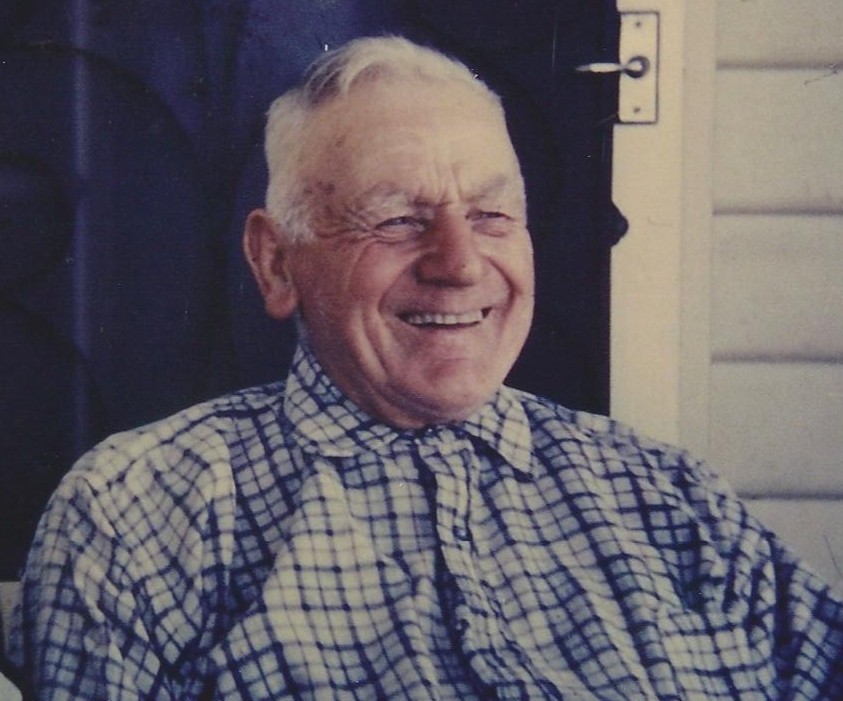
Sorry, comments are closed for this post.